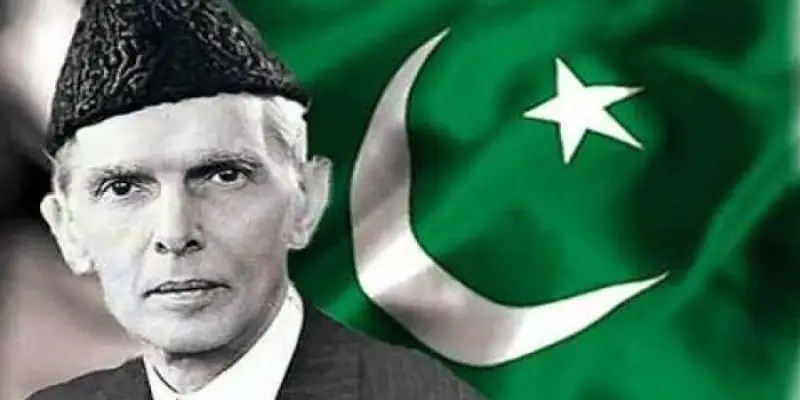The birth of Pakistan on 14 August 1947 was a historic moment not just for South Asia but for the entire world. As a newly formed nation carved out from British India, Pakistan needed leadership visionary, bold, and unshakable.
So, who was the first Governor-General of Pakistan?
The answer is simple but powerful: Quaid-e-Azam Muhammad Ali Jinnah.

He wasn’t just the founder of Pakistan he was also the country’s first head of state, guiding the nation through its earliest and most difficult days.
Table of Contents
ToggleWhat Is a Governor-General?
Before we dive into Jinnah’s role, it’s important to understand what a Governor-General actually was.
In 1947, Pakistan was part of the British Commonwealth, meaning it had its own government but still recognized the British monarch (King George VI at that time) as the symbolic head of state.
The Governor-General represented the British Crown in Pakistan but in reality, he held the highest executive power in the country, much like a modern-day president.
Muhammad Ali Jinnah – The First Governor-General of Pakistan

Muhammad Ali Jinnah officially took office as the first Governor-General of Pakistan on 15 August 1947, one day after independence.
He was nominated by the British Crown but chosen by the people of Pakistan. His selection was symbolic, unifying, and necessary. No one else had the respect, trust, and stature to lead the new country at that critical time.
Key Facts:
-
Full Name: Muhammad Ali Jinnah
-
Office Held: Governor-General of Pakistan
-
Term Start: 15 August 1947
-
Term End: 11 September 1948 (day of his passing)
-
Successor: Khawaja Nazimuddin
Role of Jinnah as Governor-General
Jinnah’s responsibilities were more than ceremonial. He shaped Pakistan’s political, legal, and economic structure in its very first year.
Some of the major contributions he made as Governor-General include:
1. Setting Up the Government
Jinnah supervised the creation of a new government from scratch. Ministries, departments, and civil services were all formed under his watch.
2. Addressing Refugee Crises
After Partition, millions of refugees poured into Pakistan. Jinnah led efforts to provide them with shelter, food, and support often under extreme pressure and chaos.
3. Ensuring Law and Order
The early days of Pakistan were filled with violence, especially along the borders. Jinnah played a key role in calming tensions and ensuring stability.
4. Foreign Relations
As the first Governor-General, Jinnah also guided Pakistan’s foreign policy—especially with India, Britain, and the Muslim world.
Jinnah’s Vision for Pakistan
As Governor-General, Jinnah made several important speeches outlining his vision for Pakistan. His most famous one was delivered on 11 August 1947, just three days before independence, where he spoke about:
-
Religious freedom for all citizens
-
Equal rights for minorities
-
Rule of law and justice
-
A democratic, inclusive nation
Though the office of Governor-General was supposed to be above politics, Jinnah remained deeply involved in shaping Pakistan’s identity and future.
His Last Days in Office
Jinnah was seriously ill during his time as Governor-General. He suffered from tuberculosis, but very few people knew. Despite his illness, he continued to work tirelessly often from his home or hospital bed.
On 11 September 1948, just over a year after Pakistan’s birth, Jinnah passed away in Karachi.
His death was a national tragedy. People wept in the streets, and many felt that Pakistan had lost its guiding light.
What Happened After Jinnah?

After Jinnah’s death, Khawaja Nazimuddin took over as the second Governor-General of Pakistan. But no one could replace the influence or authority that Jinnah held.
In 1956, Pakistan became a republic, and the post of Governor-General was abolished. The country then adopted a presidential system, and Iskander Mirza became the first President of Pakistan.
Final Thoughts
So, who was the first Governor-General of Pakistan? The answer is clear Muhammad Ali Jinnah, the founder, the leader, and the guiding force behind the creation of the nation.
But his role as Governor-General was much more than symbolic. Jinnah didn’t just raise the flag he shaped the foundation of a brand-new country. At a time when Pakistan had no real government, no currency, no army of its own, and millions of refugees at its doorstep, Jinnah’s leadership kept the country steady.
Even while fighting a serious illness, he worked day and night to build institutions, protect citizens, and lay out a vision for Pakistan’s future one based on democracy, justice, and equal rights for all.
His speeches as Governor-General are still quoted in classrooms and courtrooms. His decisions during those early months helped define Pakistan’s identity. And although he served for only one year, the impact of his leadership is still felt nearly 80 years later.
Understanding who the first Governor-General of Pakistan was helps us better understand how this country came to be and how important good leadership is in times of uncertainty. Jinnah wasn’t just the first to hold the position he defined what it meant.
His time as Governor-General may have been short, but his legacy will always be long-lasting.
FAQs: Who Was the First Governor-General of Pakistan?
1. Who was the first Governor-General of Pakistan?
Muhammad Ali Jinnah, also known as Quaid-e-Azam.
2. When did Jinnah become Governor-General?
On 15 August 1947, the day after Pakistan’s independence.
3. How long did he serve in that role?
Just over one year, until his death on 11 September 1948.
4. What was Jinnah’s role as Governor-General?
He helped establish Pakistan’s government, managed the refugee crisis, and shaped national policies.
5. What happened to the role of Governor-General?
It was abolished in 1956 when Pakistan became a republic. The role was replaced by the President.
For more information related to business or tech visit our Home page Visualpakistan.com


